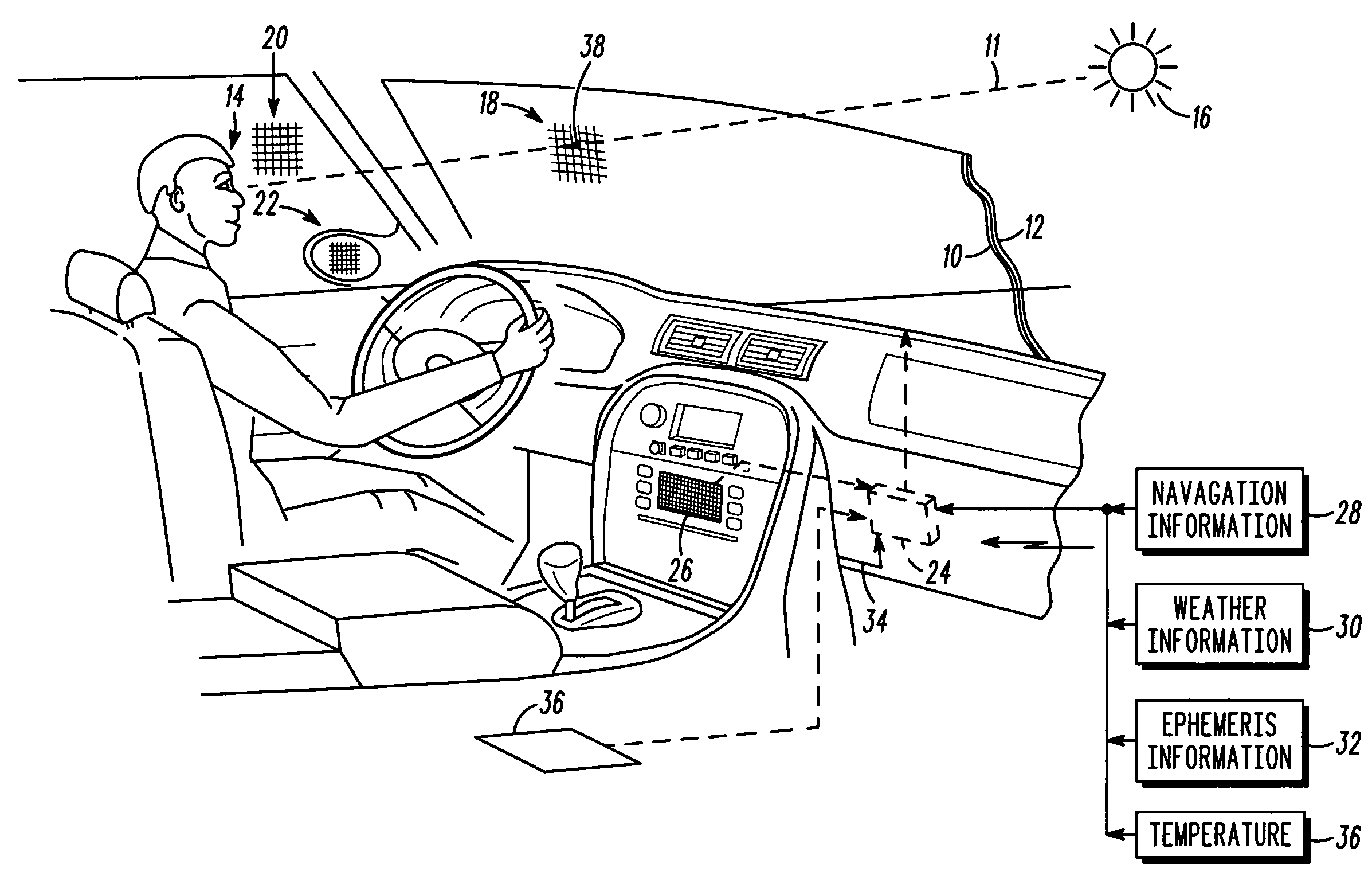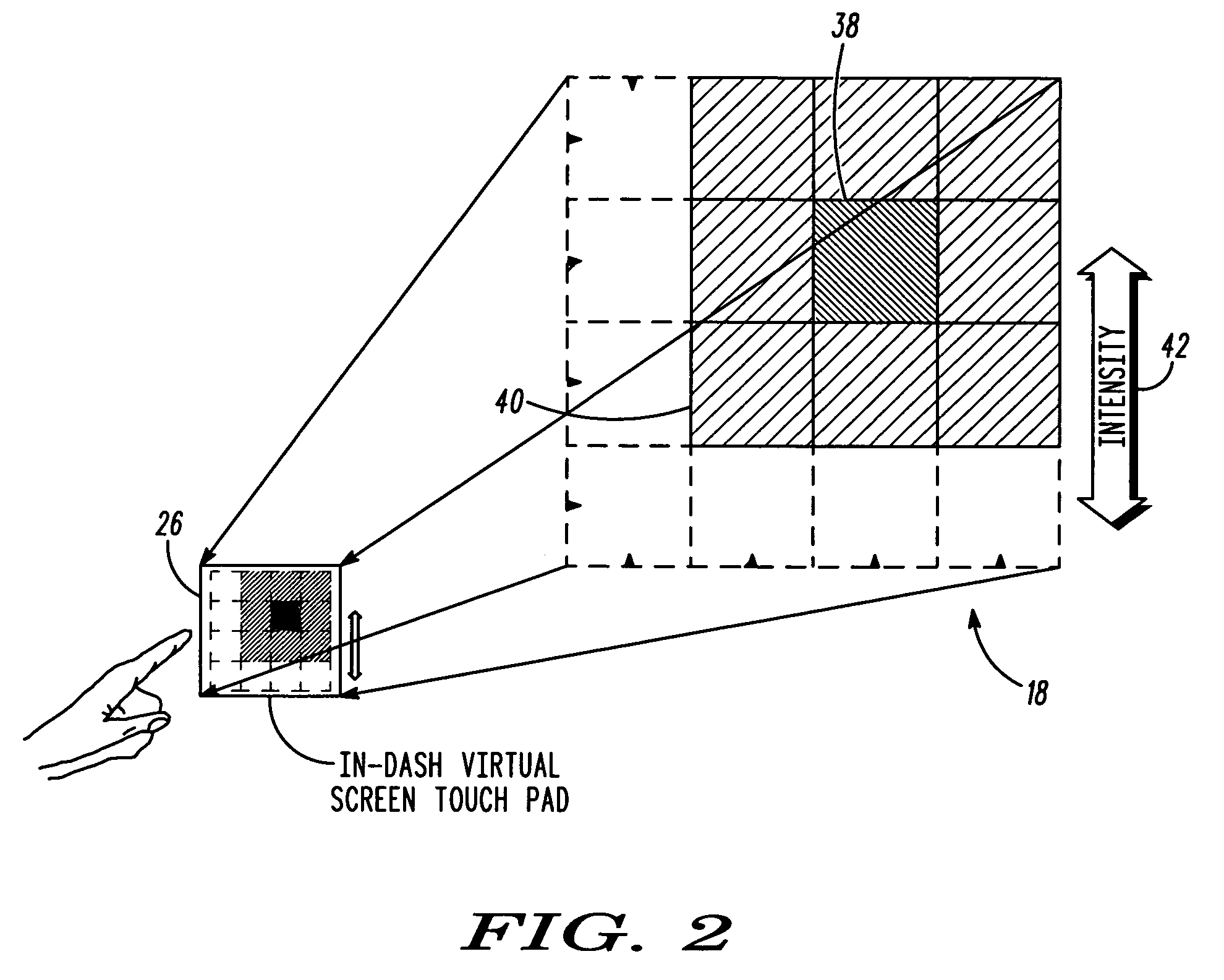Selective light attenuation system
a light attenuation system and selective technology, applied in the direction of roofs, superstructures, monocoque buildings, etc., can solve the problems of temporary blindness, blinding a driver, and dangerous intensity light sources
- Summary
- Abstract
- Description
- Claims
- Application Information
AI Technical Summary
Benefits of technology
Problems solved by technology
Method used
Image
Examples
Embodiment Construction
[0012]The present invention describes a system and method to selective attenuate intense light sources that do not require additional sensors and cameras, and do not require the tracking of a driver's eyes or position. The present invention can be applied to all vehicles, including land, sea, and aircraft. The present invention requires the addition of an electro-optic element that is disposed on one or more of the glass surfaces of the vehicle, along with associated control and processing devices. As a result, the present invention provides a system and method with a minimum amount of vehicle modifications, which reduces complexity, increases reliability and lowers costs.
[0013]FIG. 1 demonstrates an application of the present invention in a vehicle, wherein the present invention selectively attenuates light 11 from a source of light 16 to a person's eyes 14 in a vehicle. A view from the driver's seat is shown looking out of the windshield. The source of light can be any intense lig...
PUM
 Login to View More
Login to View More Abstract
Description
Claims
Application Information
 Login to View More
Login to View More - R&D
- Intellectual Property
- Life Sciences
- Materials
- Tech Scout
- Unparalleled Data Quality
- Higher Quality Content
- 60% Fewer Hallucinations
Browse by: Latest US Patents, China's latest patents, Technical Efficacy Thesaurus, Application Domain, Technology Topic, Popular Technical Reports.
© 2025 PatSnap. All rights reserved.Legal|Privacy policy|Modern Slavery Act Transparency Statement|Sitemap|About US| Contact US: help@patsnap.com



